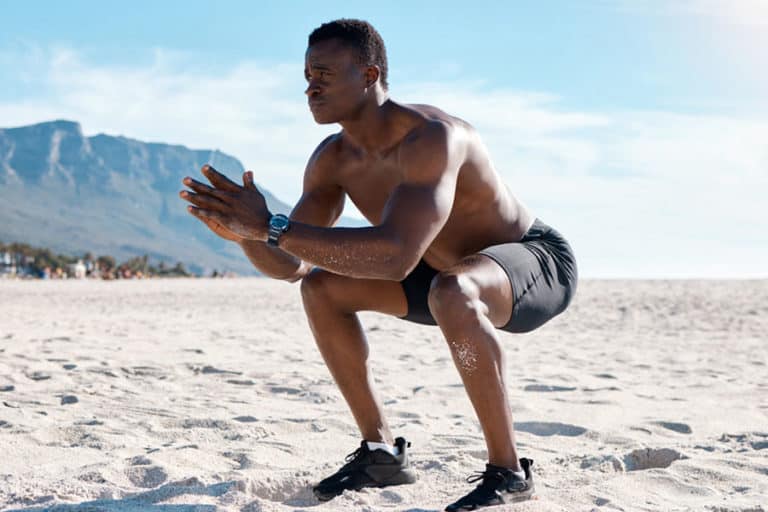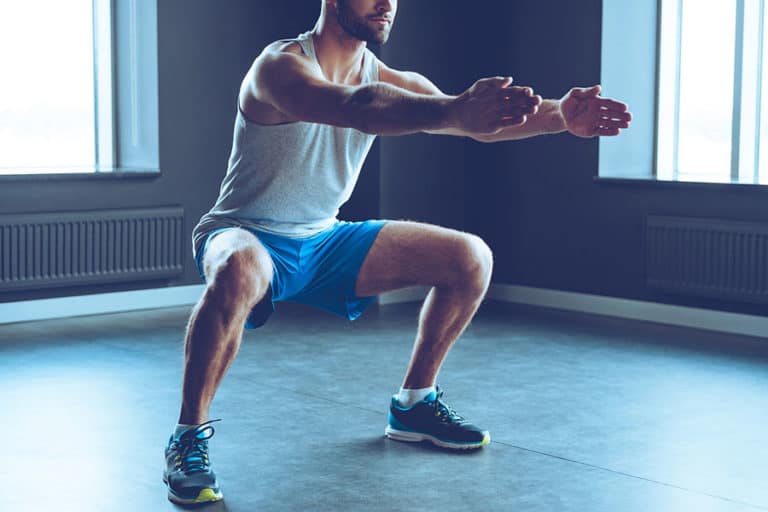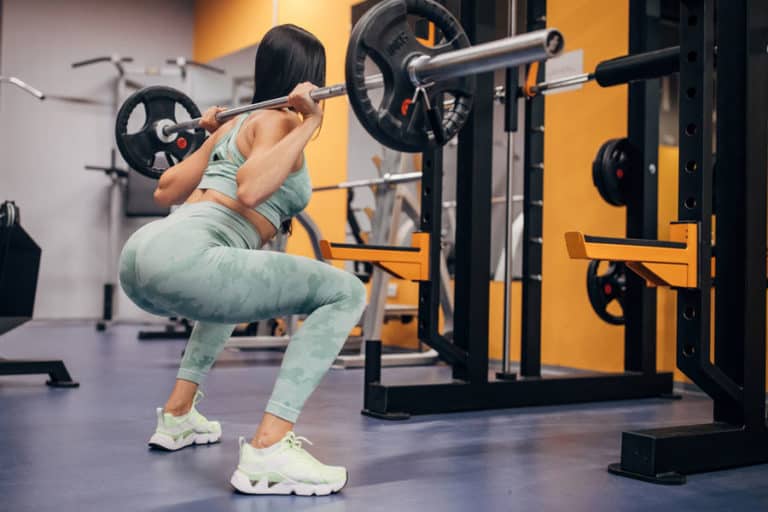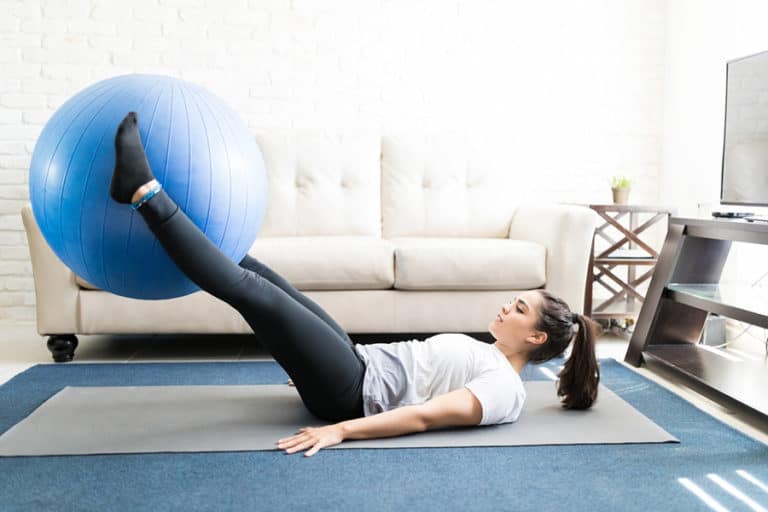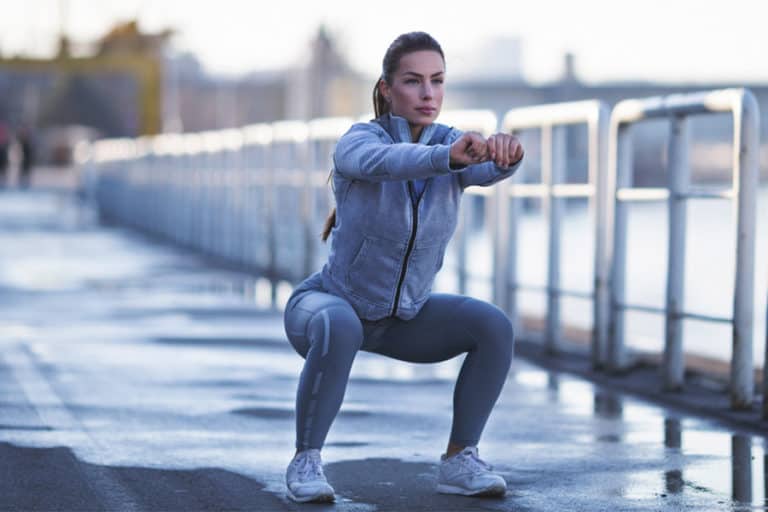9 Best Hip Flexor Exercises And Stretches
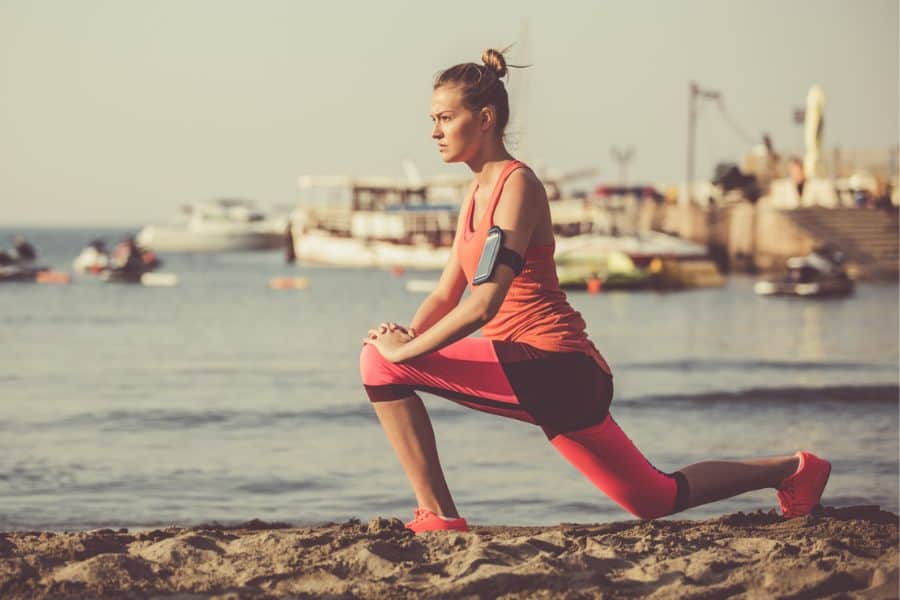
Definition | Hip flexor exercises | hip flexor stretches | 1-week sample workout plan | Benefits
Tight hip flexors can cause pain and discomfort, leading to difficulty in performing daily activities. Therefore, incorporating hip flexor exercises in your workout routine is crucial for maintaining good hip health.
We have compiled a list of 9 effective hip flexor strengthening exercises and stretches to help you improve your hip mobility.
What are the hip flexors?
Hip flexors are the muscles located in the hip area along with your upper thighs. They play a crucial role in maintaining proper posture, balance, and mobility. They are responsible for important movements such as walking, running, and jumping and have attachments on the lumbar spine, pelvis, and femur.
Here are the muscles that make up your hip flexors:
- Iliopsoas (primary hip flexors- iliacus and psoas major)
- Pectineus
- Sartorius
- Rectus Femoris
6 Best hip flexor exercises
Having tight or weak hip flexors can negatively impact the functioning of your lower back, pelvis, hips, and knees, leading to lower back pain. Therefore, it’s crucial to strengthen your hip flexor muscles.
Here are 6 hip flexor exercises that can help you achieve this goal:
1. Jump lunge
Target muscles: hip flexors, quads, hamstrings, glutes, and calves
How to do:
- Stand with feet shoulder-width apart and engage your core.
- Take a big step forward with your right leg and keep your arms by your side.
- Shift your weight forward and lower your body until the forward leg is parallel to the floor.
- Jump up and switch the position of your feet mid-air, propelling your arms into the air to help you move explosively.
- Gently land back in a basic lunge position with the opposite leg forward.
- Repeat the movement pattern, switching legs on each jump for 8-10 reps.
Summary: Jump lunge engages multiple lower body muscles, improves strength, power, balance, and agility, increases muscle tone, and burns calories. If you find plyometric jumping difficult, you can do a set of walking lunges instead.
2. Floor-sliding mountain climber
Target muscles: Glutes, quads, hip flexors, hamstrings, and calves
How to do:
- Place slide discs or paper plates that can slide on a smooth surface or wooden floor.
- Get in a plank position with feet on the discs, hands shoulder-width apart, and body in a straight line.
- Pull your right knee to the chest and slide it back slowly to maintain a tight core.
- Repeat the motion on the left side as if you are climbing a mountain.
- Continue alternating legs and sliding the feet back to their original position.
- Repeat the exercise for 8 to 10 reps.
Summary: Floor-sliding mountain climbing is an excellent exercise to strengthen the hip flexors and other muscles of the lower body. It also helps to improve balance and coordination. Make sure to keep your core tight throughout the exercise for better results.
3. Straight-leg raise
Target muscles: iliopsoas, rectus femoris, and core muscles
How to do:
- Lie down on the floor with your legs straight and arms by your side.
- Bend the right knee at 90 degrees, and place the right foot on the floor.
- Engage left leg muscles and lift left leg straight up to a 45-degree angle.
- Hold for 3-5 seconds.
- Exhale and slowly lower the left leg back to starting position.
- Repeat 10-12 times before switching legs.
Summary: The straight leg raise is an exercise that strengthens the hip flexors and core while the abdominal muscles stabilize the trunk during the lift. It’s commonly used in hip and pelvis injury rehabilitation programs and can be added to lower-body workouts.
4. Psoas march
Target muscles: Hip flexors and core muscles
How to do:
- Lie on your back with your knees bent at a 90-degree angle, keeping your spine in a neutral position. Your arms can rest on the floor or be lifted in the air.
- Straighten one leg by extending the knee and slowly bring it back to its original position.
- Repeat the same motion on the other leg and continue alternating them.
- Make sure to hold the lifted leg up for 2-3 seconds before switching legs.
- Repeat 8-10 times on each side.
Summary: The Psoas march exercise is an excellent way to strengthen your hip flexors and core muscles while improving hip mobility and stability. It’s a simple exercise that can be easily incorporated into your workout routine or added as a warm-up exercise. To further intensify the exercise, incorporate a resistance band.
5. Single-leg squat
Target muscles: Hip flexors, quads, glutes, hamstrings, abdominal muscles
How to do:
- Stand with feet slightly less than shoulder-width apart and straighten back by rolling your shoulder blades back.
- Shift weight onto the right foot and raise the left leg straight out in front.
- Keep torso upright, engage the core, and sit hips down in half squat
- Keep knees in line with toes.
- Push through the right leg to return to starting position, leaving the left leg raised for all reps on that side.
- Repeat 8-10 times before switching legs.
Summary: The single-leg squat is a challenging, highly effective exercise for improving strength, balance, and stability. It targets the hip flexors and lower body muscles while strengthening the abdominal muscles to promote better posture.
6. Kettlebell swing
Target muscles: Hip flexors, glutes, hamstrings, shoulders, back, and core.
How to do:
- Place the kettlebell right between the ankle bones.
- Stand with feet wider than hips, legs slightly turned out.
- Bend knees and hips, keeping a straight spine, to pick up the kettlebell with both hands.
- Lift kettlebell while keeping arms long and loose and squeezing shoulder blades.
- Lower butt and shift body weight into heels.
- Swing the kettlebell between your legs, then stand tall, pressing your hip forward to swing the kettlebell to shoulder level.
- Continue swinging the kettlebell backward and forward for 30-60 seconds.
Summary: The kettlebell swing is a cardio and explosive strength exercise that works all muscles in the body, with a particular emphasis on the hip flexors. This exercise helps improve your coordination and balance while building strength in your lower body.
3 Best hip flexor stretches
Incorporating hip flexor stretches into your routine is crucial for maintaining healthy and flexible hip joints, much like hip flexor exercises. Here are the three easy hip flexor stretches to increase flexibility and reduce pain.
7. Half kneeling hip stretch
Target muscles: Hip flexors and glutes
How to do:
- Position yourself on the floor by kneeling with your left foot flat in front and your right knee on the floor behind you.
- Keep your trunk tall and hands-on left knee for balance.
- Push your right glute forward. Move your hips closer to your left foot. Then, tuck in your hips slightly for pelvic tilt.
- Hold the pose for 15-30 seconds, taking a deep breath.
Summary: This simple knee-bent exercise effectively improves hip flexion and strengthens your glutes and core muscles while relieving tightness and improving hip mobility.
8. Pigeon pose
Target muscles: back, groin, hip flexors, glutes
How to do:
- Lie on your back and make a plank or a downward dog position.
- Slide your left foot forward and place your knee on the floor beside your left hand while keeping your foot close to your right hand.
- Move your right leg back as far as possible while keeping your hips straight.
- Then, gradually lower your body to the floor onto your elbows, ensuring that you bring your upper body down as much as possible.
- Hold the stretch position for 10 seconds while keeping your chest up.
- Switch sides and repeat the same steps.
Summary: Pigeon pose is an advanced yoga position that targets the hip flexors and psoas muscle through a forward bend. It opens up the hip joint, stretches the groin and pelvis, and relieves tightness in your hips.
9. Supine hip flexor stretch
Target muscles: Hip flexors, quads, and glutes
How to do:
- Lie on your back with one leg on a table or a bed and let the other leg hang off the edge.
- Avoid arching your lower back.
- Bend your left knee so that your foot is flat on the table/bed and your knee is pointing toward the ceiling.
- Let the hanging leg rest freely to feel a stretch in the hip flexors and quadriceps.
- To increase the stretch, pull the left knee to your chest.
- Hold the stretch for 20-30 seconds and repeat with another leg.
Summary: Supine Hip Flexor Stretch is a great way to stretch your hip flexors and quads. It helps release tension in the lower body, improve hip mobility, and increase flexibility. It can also relieve pain in the lower body and improve posture.
1-week sample workout plan
Below is a basic one-week sample workout plan for hip flexors that includes the exercises mentioned above:
| Days | Exercises |
| Monday | Half-kneeling hip stretch:10 reps Jump lunge: 8-10 reps Psoas March: 8-10 reps |
| Tuesday | Pigeon pose: 5 reps Floor-sliding mountain climbers: 8-10 reps Straight leg raise: 10-12 reps |
| Wednesday | Supine stretch: 2-5 reps Single leg squat: 8-10 reps Kettlebell swing: 8-10 reps |
| Thursday | Half-kneeling hip stretch:10 reps Floor-sliding mountain climbers: 8-10 reps Straight leg raise: 10-12 reps |
| Friday | Pigeon pose: 5 reps Single leg squat: 8-10 reps Kettlebell swing: 8-10 reps |
| Saturday | Supine stretch: 2-5 reps Jump lunge: 8-10 reps Psoas March: 8-10 reps |
| Sunday | Rest day |
Benefits of hip flexor exercises
Here are some benefits of strengthening your hip flexors:
- Better posture: Tight or weak hip flexors can contribute to poor posture, as they stabilize the pelvis and lumbar spine. Strengthening them can improve your posture and reduce pain and discomfort in your lower back and hips.
- Improved balance and stability: Strong hip flexors can improve your balance and stability, which is essential for daily activities like walking, climbing stairs, and standing for long periods.
- Reduced lower back pain: The hip flexors are closely connected to the muscles in the lower back. Strengthening them can help alleviate lower back pain by reducing tension and pressure in the lumbar spine.
- Improved flexibility: Strengthening your hip flexors can improve your overall flexibility and range of motion in your hips and lower body.
- Enhanced core strength: The hip flexors are part of the core muscle group and play a role in stabilizing the trunk. Strengthening them can improve your overall core strength and stability.
- Improved athletic performance: Strong hip flexors can improve your speed, agility, and power in athletic activities like running, jumping, and kicking.
- Reduced risk of injury: Weak hip flexors can lead to imbalances and compensations in your body that increase the risk of injury in your lower back, hips, knees, and ankles. Strengthening these muscles can help prevent such injuries.
Conclusion
Strengthening the hip flexors is essential for maintaining proper movement patterns, reducing pain, and improving athletic performance.
The hip flexor exercises outlined above can help you achieve these goals. Remember to warm up before doing any of these exercises, and take it slow and steady. With proper form and technique, you should see results in no time!



